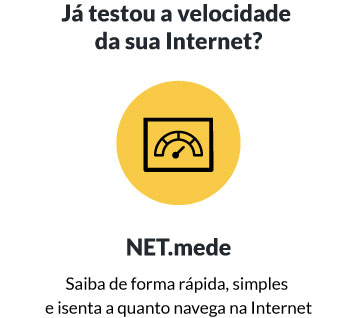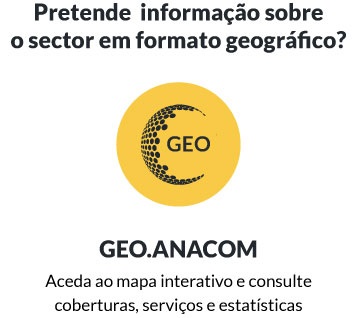Ladies and Gentlemen,
It is a great pleasure and honour to be here, in this country of such an important history, that we respect so much, capital city of three empires, crossing point of civilizations, with such a strategic role in the present concert of the nations and such a vibrant people.
Five hundred years ago, the Portuguese fleet has crossed the seas, opening the Indian Ocean for nearly a century and giving the first steps for the globalisation of trade and society. The Portuguese contribution to our almost global village is now more humble, peaceful and cooperative. Nowadays, the internet allows us to navigate with less dangers and more velocity, and to discover, on line, instead of unknown lands, the richness of cultural diversity.
We are an active member of The European Union, but we have a particular experience on telecom market and society that could be interesting to share with you and I am really curious to know better your own reality.
We welcome the Turkish active participation in Europe, in particular the participation of the Turkish NRA 1 (ICTA) in the IRG/BEREC, - the european national regulators forum - whose latest meeting in Oporto, two weeks ago, was attempt by Turkish NRA. And I think that we can improve our bilateral cooperation that already began with the Portuguese NRA (ANACOM), in a workshop being held in Lisbon, in 2010, under the TAIEX (Tecnhical Assistance Information Exchange Instrument) DG enlargement facility.
In our contemporary world, the digital highways have the same level of importance that the sea highways assumed for our ancestors: they change our life.
Especially, the NGA 2 networks will meet the growing demand for bandwidth - by residential and business users - resulting from the universalisation and sophistication of services and from the increased inter activity of applications demanding more ambitious upload and download speeds (as it is the case for telemedicine, telepresence, home security, domotics, electronic commerce, e-government, justice services, online gaming, VoD and social networks such as the facebook).
Hence, to win today's challenges towards a digital nation and a digital global world - whilst promoting a competitive economy, ensuring social cohesion, improving the quality of public services and contributing to job creation - significant steps have been taken recently by the government and by ANACOM.
1. Regulatory challenges
The NGA networks offer an amazing scope of opportunities for operators, public administration, end users and for the society in general, but also raise a considerable number of regulatory challenges.
We have identified three main problems.
(a) The roll out of NGA and the new investments on fibre cannot destroy the investment made by alternative operators on local loop unbundling. A suden interruption of copper net offers, due to the implementation of new network topologies, could have as consequence a rebuilding of monopoly of the historical incumbent, still very powerful. It was important to allow new investments, but also to protect the payback of the investments recently incurred by alternative operators, that could be questioned with an abrupt and total phase out of the present offerings
(b) Secondly, when we need to go fast we should not have barriers. The issue is the following: how to obtain the agreement of a multitude of public and private entities, with lot’s of autonomy - such as municipalities, public companies, railways companies, etc? And how to get the agreement of the private building owners in order to avoid the restrictive effect "the first who enter the building close the door to the others"? Moreover, how to coordinate the successive civil works interventions on the streets, opening, closing and reopening the holes?
(c) Thirdly, as recognised by EC, in the absence of active and focused public policies, the info-inclusion of rural populations, could be sacrificed to the sheer logic of markets, resulting in the exclusion of unprofitable geographic areas.
2. Regulatory achievements
To address the above mentioned challenges, a series of measures was timely implemented by ANACOM.
(a) A non disruptive migration to NGA
First, we try to have a non disruptive migration to NGA. In the context of the "wholesale broadband access" market analysis (EU market 5), we made a regional segmentation and a distinction between "competitive areas" (areas where an alternative operator is co-installed, with a cable operator and where the main operator has more than 60% of cabled houses) and "non competitive areas". In the competitive areas, the obligations charging the PT group have been removed, namely the publication of a broadband access reference offer ("Rede ADSL PT"). Nevertheless, a transitional period has been established: during one year the PT Group cannot exacerbate the offers conditions and it may only withdraw access or worsen the offers conditions after a 6-month prior warning.
At the same time in the "wholesale provision of access (physical) to network infrastructure at a fixed location" market analysis (EU market 4) obligations still remained, namely to give access to local loops and sub loops; the possibility of imposing access to fibre optic and to dark fibre where access to conduits is impossible is foreseen.
In these conditions a new fibre net can be developed, but without jeopardising the competitors offers, based on local loops unbundling and co-instalation.
(b) Facilitate the access to ducts
Portugal pioneered at the world level the obligation imposed upon the historic operator to make available a reference offer of access to ducts and related infrastructure, assumed as best practice by the EC and now followed by other countries.
Recently the Decree- Law 123/2009 introduce even more ambition. Under this law all entities who hold relevant duct networks, no mater if they manage electric grids, watersupply or railway lines, suitable for the accommodations of electronic communications networks - such as State, public bodies, autonomous regions, local municipalities, private companies with a public concession -, are submited to the obligation to open and to give access to their dutcs (and poles or other facilities) on a non discriminatory base and technological neutrality. This right to access is limited only by the lack of capacity of infrastructures or security reasons.
To facilitate the access to these infrastructures, the same law established a geo-referenced Centralized Information System, to be managed by ANACOM. The idea is to have a coordinated action on the underground, imposing a prior information duty. The SIC should contain data on records of infrastructures held by those entities.
Also new rules of access to buildings ("ITED") and of access to blocks of buildings ("ITUR") is considered an European reference, contributing to reduce the implementation costs of broadband networks. These technical standards make easier the elimination of vertical and horizontal barriers, in order to widespread the roll-out of fibre optic to the home, in the possible shortest time.
(c) Put the rural areas on the ticket
To fight against the risk of "a country, two speeds", one of the most significant steps is the full national coverage with NGA networks. In fact, to promote equal opportunities between rural and urban populations, it was deemed instrumental to implement those networks also in rural areas, where the business case is commonly perceived as more complex in face of increased costs (considering the population dispersion and the higher length of the local loop) and in face of lower revenues (considering the lower income per capita of rural populations).
In this context, the Government (with the support of ANACOM in its advisory role), launched in mid 2009, five public tenders covering five different geographic areas in Portugal Mainland, Azores and Madeira. These areas covered 140 municipalities where there was no competition for fixed broadband services at retail level, accounting for 12% of the overall population, 15% of the households and 43% of the national territory.
This was truly a pioneer initiative at the world level, considering both its national scope and the download speeds of 40 Mbps for the end user, when, in broad terms, the remaining European countries are struggling to reach a coverage of downloads speeds up to 2 Mps.
[The winners of the public tenders (which closed in 2010) shall ensure, a minimum coverage of 50% of the population in each of the covered municipalities, encompassing circa 29% of the households in those areas. Those entities will invest around 182,5 million euros, of which 106,2 millions are publicly funded.]
The resulting networks shall be open, for a period, of twenty years, with the wholesale offer abiding by the principles of transparency, non-discrimination and healthy competition.
3. Other issues on the transition to the digital society
The process of spectrum rearrangement, namely in what concerns the "digital dividend", intrinsic to the "switch off" of analogue television is currently in place, with a view also to promote the adoption of superfast broadband mobile technologies such as the LTE 3. It was in this context that ANACOM assigned, in 2010, frequency usage rights that can be used to deliver BWA 4 services, following an auction.
In Portugal, country where the mobile penetration rate is higher than 150%, it is expected that the NGA success will depend also on the use of sophisticated mobile terminal equipment, for instance "smarthphones" with very high capacity.
At the end of the first quarter of 2011, 15 operators have already invested in superfast broadband. At the same date, the number of households cabled with FTTH 5 /FTTB 6 ascended to more than 1,5 millions (with a penetration rate of circa 27%), while the number of households cabled with HFC 7 was nearing 3,9 millions (with a penetration rate of circa 68%).
Before finished I would like to remember a personal history: 13 years ago, I was mayor of a charming town, District Capital, named Aveiro. I was than challenge by a Minister with vision, to build in Aveiro the first Digital City of Portugal. The challenge was not a technical one. The crucial goal is to provide digital facilities that could be really useful to the citizens. And we made a fantastic work with the municipal services, the University, the schools, social institutions, health system, private companies, culture, entertainement and leisure. But of course it is almost impossible to have a real imaterial city when you still only have narrow band. A major part of our dreams at the time, only now are being possible: in one way because we have now a very large brandwith widespread over all the country. In another way because the entire communities, since the very young students to the eldest people, are now familiar using TIC. The message is this one: you cannot built a digital society if you don’t have enough bandwith, but, more important, you cannot built it without useful applications and citizens using technologies. The technology should not be a new factor of social exclusion. It was pioneer, but it was a fruitful way: Portugal is now heading the ranking of electronic government in Europe.
4. Conclusion
The conditions which are necessary to keep Portugal, in the forthcoming years, in the forefront of the most modern and functional electronic communications networks and services are already in place, much to the benefit of the whole country, encompassing both rural and urban populations, the youth and the senior citizens, small enterprises and large enterprises and the public administration and services.
The current economic scenario and the uncertainty regarding future investments do not allow consistent forecasts on the overall impact of NGA networks and services.
Notwithstanding, it is expected that sectors such as education, health, social work, mobility, logistics, justice, security and energy, will contribute to generate qualified employment, beyond temporary jobs associated with the implementation of the NGA network infrastructure.
This will enable the current and future generations to surf the next generation internet waves with the same audacity with which the navigators of the Age of Discoveries boldly crossed uncharted seas.
The new challenges will then have to do with making an active contribution to load the new networks with the production of contents and services which really add value, enhance innovation and augment productivity - thus contributing to the transition between an Information Society to a Knowledge Society - but also in ensuring that the people is aware of their rights, as consumers and as citizens of a digital and better community.
Alberto Souto de Miranda
ICP-ANACOM - Vice-President
1 National Regulator Authority.
2 Next Generation Access.
3 Long Term Evolution.
4 Broadband Wireless Acces.
5 Fiber To The Home.
6 Fiber to the Building.
7 Hybrid Fiber-Coaxial.




